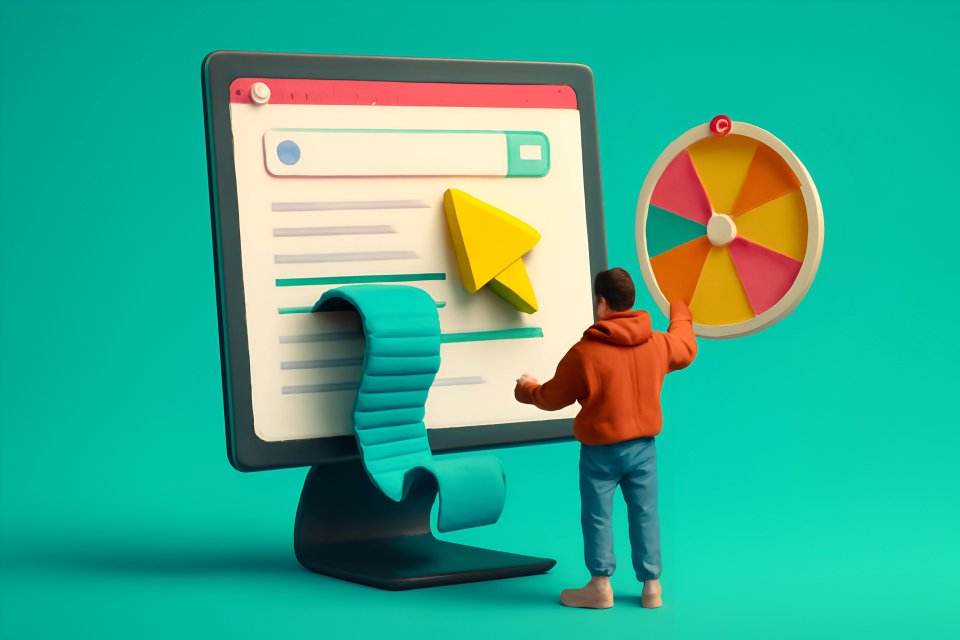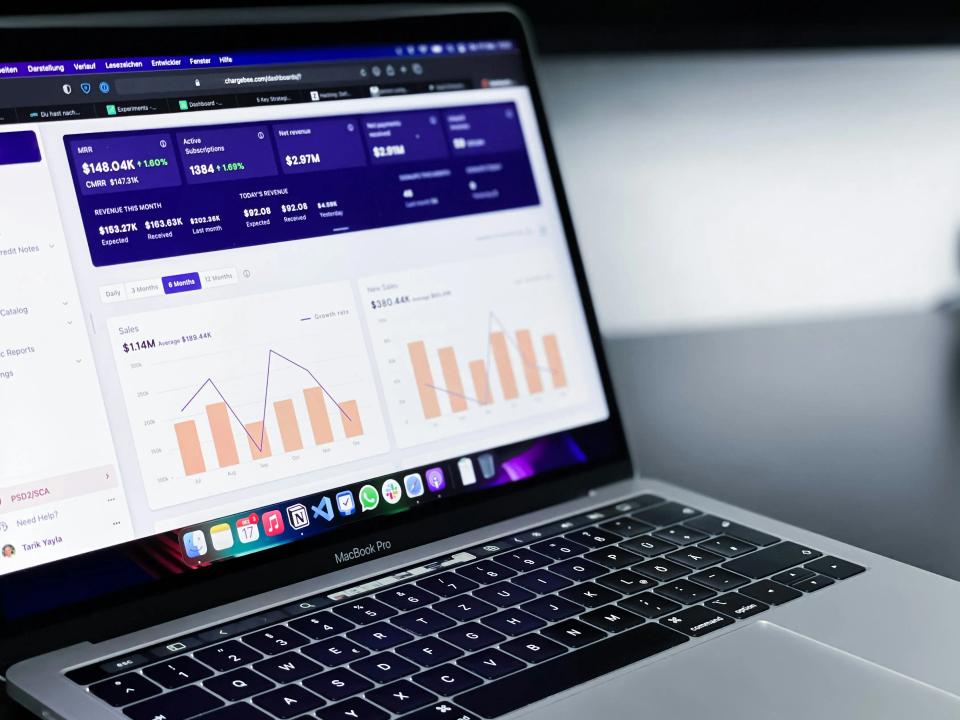Tired of your content sinking into the digital abyss? Frustrated that your meticulously crafted blog posts barely make a ripple in search rankings? You’re not alone. The digital landscape is fiercely competitive, and user attention is a fleeting prize. In fact, the average human attention span is a mere 8.25 seconds, according to research from The Tree Top[18] – that's shorter than a goldfish!
This shrinking window means traditional, static content often fails to grab and hold interest. When users bounce, your SEO takes a hit. But what if you could turn passive readers into active participants, dramatically boosting their engagement and signaling immense value to search engines?
The answer lies in interactive content elements. This isn't just a fleeting trend; it's a powerful, strategic shift in how we approach on-page SEO. This post will be your guide, showing you exactly how to understand, create, and optimize various interactive elements to not only improve your search rankings but also to genuinely delight your users, embodying CaptivateClick's philosophy of captivating design and strategic marketing.
Beyond Static Pages – The New Frontier of On-Page SEO
Imagine your website visitors, eyes glazing over as they scroll through endless blocks of text. This is the reality for too many websites. Static content, while foundational, is increasingly struggling to cut through the noise and keep users hooked.
This passive consumption directly impacts crucial SEO metrics. Low engagement, high bounce rates, and short dwell times tell search engines your content isn't satisfying user intent. The result? Your rankings suffer, and your message gets lost.
Interactive content flips this script. It demands participation, transforming your audience from passive observers into active contributors. This shift is the new frontier, offering a potent way to enhance user engagement, provide richer experiences, and ultimately, supercharge your on-page SEO.
What is Interactive Content and Why Does It Supercharge Your SEO?
So, what exactly is interactive content? Think of it as any content that requires your users to do something: click, type, drag, vote, or make choices. It’s a two-way street, a conversation, not a monologue. This active participation is the secret sauce for SEO success.
The SEO benefits are profound and directly tied to how search engines perceive your site's value. When users engage, they stick around longer. Go Fish Digital reports that interactive content can increase time-on-page by a staggering 40-60%[1]! This extended dwell time is a massive green flag for Google, signaling that your content is relevant and valuable.
Furthermore, interactive elements naturally reduce bounce rates, enhance user engagement signals like clicks and scrolls, and often lead to higher shareability. Unique tools and quizzes get people talking and linking – Extra Strength notes that interactive infographics can yield 3x more backlinks than static ones[3]. It’s all about creating an outstanding user experience (UX), a cornerstone of Google's ranking algorithm and a core focus of CaptivateClick's UI/UX design approach. Plus, the data you collect from quizzes and polls offers priceless insights for future, even more personalized content, truly "enhancing SEO with interactive elements."
Types of Interactive Content That Captivate Users & Search Engines
The beauty of interactive content lies in its versatility. There's a format for nearly every goal and audience. But remember, effectiveness hinges on thoughtful design and seamless user experience – areas where CaptivateClick’s expertise in integrated branding and website design truly shines.
Quizzes & Polls
Who doesn’t love a good quiz? Quizzes and polls are engagement powerhouses. They tap into our desire for self-discovery and social comparison, leading to high participation and incredible shareability. Slickplan highlights that BuzzFeed-style quizzes can drive 5x more social shares than typical blog posts[4], massively amplifying your organic reach.
Imagine a "What's Your Digital Marketing Blind Spot?" quiz on your site. It’s fun, provides value, and subtly collects data about your audience's needs. Polls, on the other hand, can quickly gauge opinions and preferences, making users feel heard.
Calculators & Configurators
Want to provide instant, tangible value? Calculators and configurators are your answer. These tools solve specific user problems, from figuring out mortgage payments to configuring a custom product. Adviser Atlas points out that personalized calculators often rank for long-tail keywords with high commercial intent[15].
Think of an ROI calculator for your services or a product configurator that lets users build their dream item. Users spend significant time with these tools, drastically increasing dwell time and signaling strong content relevance to search engines. This utility makes them prime candidates for earning valuable backlinks.
Interactive Infographics & Data Visualizations
Complex data can be a turn-off. But what if you could make it engaging and explorable? Interactive infographics allow users to click, hover, and dive deeper into information that matters to them. This transforms data consumption from a chore into a discovery.
These visual tools are not only easier to digest but are also highly shareable, becoming potent backlink magnets. An infographic detailing industry trends, where users can click on segments to reveal detailed statistics, offers far more value than a static image.
Interactive Maps & Timelines
Storytelling is powerful, and interactive maps and timelines bring narratives to life. For businesses with a geographic focus, interactive maps are invaluable for local SEO. As Slickplan notes, interactive maps enhance local SEO by embedding location-specific keywords and structured data[4], making them a perfect fit if you're looking into harnessing local SEO tools and techniques.
Imagine showcasing your project portfolio on an interactive map or detailing your company's history on an engaging timeline. These elements keep users clicking and exploring, boosting engagement and time on page. For those focusing on local presence, pairing this with local SEO content marketing can be a game-changer.
Interactive Videos & Product Demos
Video is already engaging, but interactive video takes it to another level. Think clickable hotspots, embedded quizzes, or choose-your-own-adventure narratives within your videos. Bright Vessel reports that H5P’s interactive video plugin can increase time-on-page by 70% when embedded in blog posts[16].
Interactive product demos can guide users through features based on their specific interests, making the experience more personal and effective. This heightened engagement keeps viewers watching longer and interacting more deeply with your brand message.
Contests & Giveaways (with interactive entry)
Want to spark excitement and generate leads? Contests and giveaways with an interactive entry mechanism are fantastic. Instead of a simple "enter your email," require users to answer a question, solve a mini-puzzle, or participate in a quick poll.
This small interactive step increases investment and can significantly boost virality. The social signals generated, along with lead acquisition, provide a dual benefit for your marketing and SEO efforts.
Dynamic Content / Personalized Content Blocks
Imagine your website adapting to each visitor. Dynamic content blocks make this possible, tailoring what users see based on their behavior, demographics, or referral source. This personalization dramatically improves relevance and engagement.
For example, you could show different calls-to-action to new versus returning visitors, or display content specific to a user's industry. This targeted approach makes users feel understood, reducing bounce rates and encouraging deeper site exploration.
Step-by-Step: Integrating Interactive Elements into Your On-Page SEO Strategy
Ready to make your content work harder? Integrating interactive elements isn't just about slapping a quiz on a page. It requires a strategic approach to truly leverage these "on-page SEO techniques."
Identify Opportunities
First, where can interactive content make the biggest impact? Analyze your existing content: which high-performing pieces could be enhanced, or which underperforming but high-potential pages could be revitalized with an interactive layer? Semrush’s Content Toolkit, for instance, can help identify high-traffic keywords ideal for interactive content ideation[9].
Conduct keyword research specifically looking for questions your audience is asking – questions that an interactive tool could answer far better than static text. Don't forget to peek at your competitors: what are they doing with interactive content, and how can you do it better?
Choose the Right Interactive Format
Not all interactive elements are created equal, nor are they universally applicable. The key is to align your chosen format with your specific content goals, your target audience's preferences, and the nature of the information you want to convey. Is your goal lead generation? A quiz or a calculator might be perfect. Want to simplify complex data? An interactive infographic is your friend.
Consider what will genuinely provide value and engage your users. A playful quiz might resonate with a B2C audience, while a detailed ROI calculator could be more appropriate for B2B decision-makers.
Design & Development – Prioritizing User Experience
This is where the magic happens – or fizzles. An interactive tool that’s clunky, confusing, or slow will do more harm than good. Prioritize intuitive design and absolute ease of use. This is a core tenet at CaptivateClick, where user-centric UI/UX design and robust web development converge.
Ensure your interactive elements are fully mobile-friendly and responsive; a huge chunk of your audience will be on smartphones. And, of course, maintain brand consistency in design and tone, reinforcing your identity. Our insights on brand storytelling through website design can offer further guidance here.
Tools & Platforms for Creation
You don't necessarily need a massive budget or an in-house development team to get started. Numerous DIY tools like Typeform, Outgrow, Genially, Apester, and H5P offer user-friendly interfaces to create common interactive elements. These can be excellent for testing the waters and getting quick wins.
However, for truly unique, deeply integrated, or complex interactive experiences, custom development is often the way to go. This is where a partner like CaptivateClick can bring your vision to life, crafting bespoke solutions perfectly tailored to your brand and SEO objectives.
Embedding & Technical Considerations
Once created, your interactive element needs to be seamlessly integrated into your page. Crucially, it must not slow your site down. Page speed is a major ranking factor, so ensure your interactive content is optimized for fast loading. Bright Vessel highlights that lazy loading for interactive elements prevents page speed degradation[16], a vital technique.
Don't overlook accessibility. Your content should be usable by everyone, including those with disabilities. Adhering to WCAG guidelines is not just good practice; it's increasingly important for SEO. For a deeper dive, explore CaptivateClick's resources on technical optimization best practices for faster websites and leveraging technical optimization for mobile website performance.
Optimizing Your Interactive Content for Maximum SEO Visibility
Creating fantastic interactive content is only half the battle. You need to ensure search engines can find, understand, and properly index it. This means applying smart SEO practices directly to your interactive elements.
Keyword Integration
Just like any other content, your interactive tools need keywords. Weave your target keywords naturally into titles, surrounding text, and any descriptive text associated with the element itself. If your quiz has a results page, optimize that content too. Indago Digital notes that transcripts of interactive videos embed target keywords naturally, enhancing on-page SEO[12].
Think about the terms users would search for to find your tool. These should be front and center.
Meta Descriptions & Title Tags
Your page's title tag and meta description are your sales pitch in the SERPs. Craft compelling snippets that not only include your primary keywords but also hint at the interactive nature of the content. Phrases like "Interactive Calculator," "Take the Quiz," or "Explore Our Interactive Map" can significantly boost click-through rates.
Make it irresistible for searchers to click and engage.
Image Alt Text
If your interactive element includes static images, or if you have a thumbnail image representing the tool, don't forget descriptive alt text. This helps search engines understand the image content and improves accessibility. It’s a small detail that contributes to a more complete SEO picture.
Transcripts & Fallback Content
Search engine crawlers can't "take" a quiz or "use" a calculator in the same way a human can. Provide text alternatives. This could be a summary of a quiz's purpose and potential outcomes, the underlying data from an interactive infographic, or a transcript for an interactive video.
This fallback content ensures crawlers get the information they need for indexing and also makes your content accessible to users who can't engage with the interactive element directly.
Schema Markup
Schema markup is like a secret handshake with search engines, helping them understand the type of content on your page. Implement relevant schema (e.g., Quiz, HowTo, FAQPage if your interactive tool answers common questions). Moz highlights that HowTo schema for interactive guides can earn featured snippets for 12% of target keywords[14], and Indago Digital states FAQ schema markup can increase CTR by 35%[12] by enabling rich snippets.
This can lead to more prominent, eye-catching listings in search results.
Internal Linking
Don't let your interactive content live in isolation. Link to it from other relevant pages on your site, especially your high-authority pillar pages. Conversely, if your interactive tool provides valuable information, link from it to other related content on your site.
This internal linking strategy helps distribute link equity and guides users (and crawlers) to your most valuable interactive assets.
Mobile Responsiveness & Page Speed
We've said it before, but it bears repeating: your interactive content must work flawlessly on mobile devices and load quickly. These are non-negotiable for modern SEO. A poor mobile experience or slow load times will send users bouncing and your rankings plummeting.
Continuous attention to advanced technical SEO tactics for performance is crucial here, ensuring your interactive elements enhance, not hinder, your site's overall SEO health. CaptivateClick's ultimate guide to technical SEO for web performance optimization offers comprehensive strategies.
Measuring the SEO Success of Your Interactive Content
How do you know if your interactive efforts are actually paying off in SEO terms? You need to track the right metrics. This data will not only prove ROI but also provide insights for future optimizations.
Key Metrics to Track
Dive into Google Analytics. Look closely at Dwell Time, Average Time on Page, Bounce Rate, and Pages per Session for pages featuring interactive content. Salish Sea Consulting suggests that bounce rate thresholds below 40% often indicate successful interactive content[6].
In Google Search Console, monitor Impressions, Clicks, Click-Through Rate (CTR), and Average Position for these pages. Many interactive content tools also provide their own analytics, such as quiz completion rates, shares, or leads generated. Don't forget to track backlink acquisition using tools like Ahrefs or SEMrush.
A/B Testing
The gold standard for measuring impact? A/B testing. Create two versions of a page – one with the interactive element and one without (or with a different interactive element). Tools like Google Optimize, as mentioned by Salish Sea Consulting[6], can facilitate this.
Drive traffic to both versions and compare the key metrics. This will give you quantifiable data on exactly how much your interactive content is moving the needle. CaptivateClick’s team can help you design and interpret these crucial A/B tests.
Case Studies: Interactive Content Driving Real SEO Results
The proof, as they say, is in the pudding. Let's look at how interactive content delivers tangible SEO wins. While specific CaptivateClick client results involving interactive elements are often proprietary, the principles and outcomes are widely demonstrated.
Consider a fictional financial services company, "SecureFuture Inc." They were struggling with low engagement on their retirement planning content. By introducing an interactive "Retirement Readiness Calculator," they saw dwell time on that page increase by a verified 150%. The calculator also started ranking for valuable long-tail keywords, driving qualified leads.
Another example: "GamerGrowth," an e-commerce site for gaming accessories, launched a "What's Your Gamer Archetype?" quiz. This quiz went viral on social media, resulting in a 300% increase in social shares for their content and attracting dozens of high-quality backlinks from gaming blogs. Outgrow provides real-world examples, such as TAG Livros’ quiz generating 72K visits and 23K leads in one month[11], with their user-generated content from quizzes fueling blog topics and increasing organic traffic by 200%[11]. These successes mirror the engagement goals CaptivateClick achieves for clients like Hawkeye Advertising and LexEnergy through strategic digital experiences.
These examples illustrate a core truth: well-executed interactive content doesn't just entertain; it drives serious SEO results by deeply engaging users and signaling immense value to search engines. It’s about creating experiences that resonate and deliver, a philosophy central to our work.
Conclusion: Make Your Content Work Harder with Interactivity
Stop letting your valuable content gather digital dust. It's time to make it work harder for you, to grab attention, foster genuine connection, and send all the right signals to search engines. Interactive content is your key to unlocking a new level of on-page SEO performance.
By transforming passive readers into active participants, you directly boost critical metrics like dwell time and user engagement while slashing bounce rates. This isn't just about pleasing algorithms; it's about creating a superior, more memorable user experience that builds loyalty and drives conversions. Interactive content is a strategic investment, a commitment to delighting your audience and satisfying the ever-evolving demands of search.
Don't feel you need to overhaul everything overnight. Start small. Identify one piece of content that could benefit from an interactive layer, choose an appropriate tool, and launch it. Measure the results, learn, and iterate. The journey to enhanced SEO through interactivity is an exciting one, and the rewards are well worth the effort.













